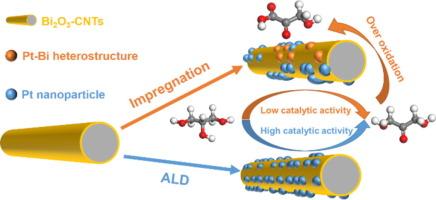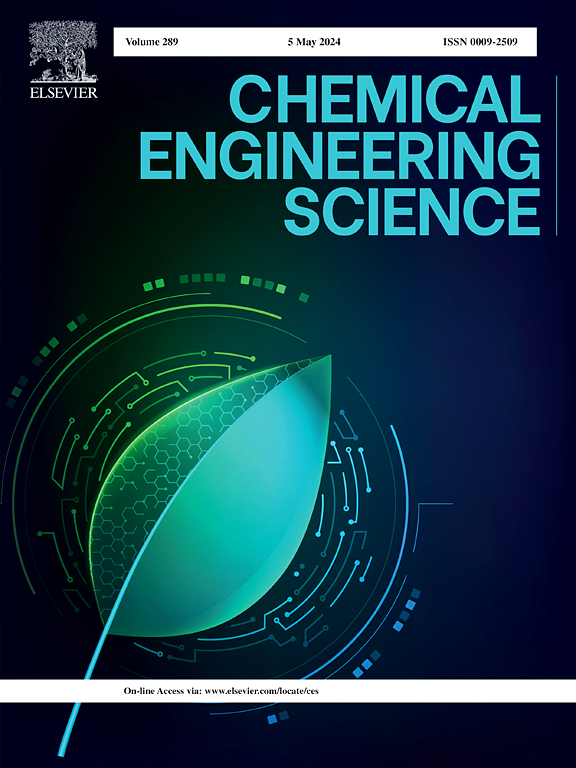Construction of a uniform Pt-Bi2O3 interface to enhance selective oxidation of glycerol to dihydroxyacetone
IF 4.1
2区 工程技术
Q2 ENGINEERING, CHEMICAL
引用次数: 0
Abstract
Uniform catalytic active sites are crucial for both fundamental studies and practical applications. In this study, a Bi2O3-coated carbon nanotubes (CNTs) composite (Bi2O3-CNTs) was employed as a support to immobilize Pt catalysts using both atomic layer deposition (ALD) and impregnation methods. The geometric and electronic properties of the catalysts, along with their performance in the base-free oxidation of glycerol to dihydroxyacetone (DHA), were comparatively investigated. The results indicate that the ALD-prepared catalyst significantly outperforms the impregnation-prepared one in terms of catalytic activity and DHA yield. Characterization of the catalysts reveals that the superior performance of the ALD-prepared catalyst is attributed to the uniform Pt- Bi2O3 interface and the positively charged Pt species. Furthermore, tuning the geometric and electronic properties of ALD-prepared Pt catalysts leads to the development of a catalyst featuring a relatively abundant Pt-Bi2O3 interface and electron-deficient Pt, resulting in enhanced catalytic performance. These findings may offer valuable guidance for developing and optimizing Pt-based catalysts for the selective oxidation of glycerol to DHA.


均匀Pt-Bi2O3界面的构建以增强甘油选择性氧化为二羟基丙酮
均匀的催化活性位点对于基础研究和实际应用都至关重要。本研究采用原子层沉积(ALD)和浸渍两种方法,以 Bi2O3 涂层碳纳米管(CNTs)复合材料(Bi2O3-CNTs)为载体固定铂催化剂。比较研究了催化剂的几何和电子特性,以及它们在甘油无碱氧化成二羟基丙酮(DHA)过程中的性能。结果表明,ALD 制备的催化剂在催化活性和 DHA 产率方面明显优于浸渍制备的催化剂。催化剂的表征结果表明,ALD 制备的催化剂性能优越,这要归功于均匀的铂-Bi2O3 界面和带正电荷的铂物种。此外,通过调整 ALD 制备的铂催化剂的几何和电子特性,还可以开发出具有相对丰富的铂-Bi2O3 界面和缺电子铂的催化剂,从而提高催化性能。这些发现可为开发和优化铂基催化剂以将甘油选择性氧化为 DHA 提供有价值的指导。
本文章由计算机程序翻译,如有差异,请以英文原文为准。
求助全文
约1分钟内获得全文
求助全文
来源期刊

Chemical Engineering Science
工程技术-工程:化工
CiteScore
7.50
自引率
8.50%
发文量
1025
审稿时长
50 days
期刊介绍:
Chemical engineering enables the transformation of natural resources and energy into useful products for society. It draws on and applies natural sciences, mathematics and economics, and has developed fundamental engineering science that underpins the discipline.
Chemical Engineering Science (CES) has been publishing papers on the fundamentals of chemical engineering since 1951. CES is the platform where the most significant advances in the discipline have ever since been published. Chemical Engineering Science has accompanied and sustained chemical engineering through its development into the vibrant and broad scientific discipline it is today.
 求助内容:
求助内容: 应助结果提醒方式:
应助结果提醒方式:


